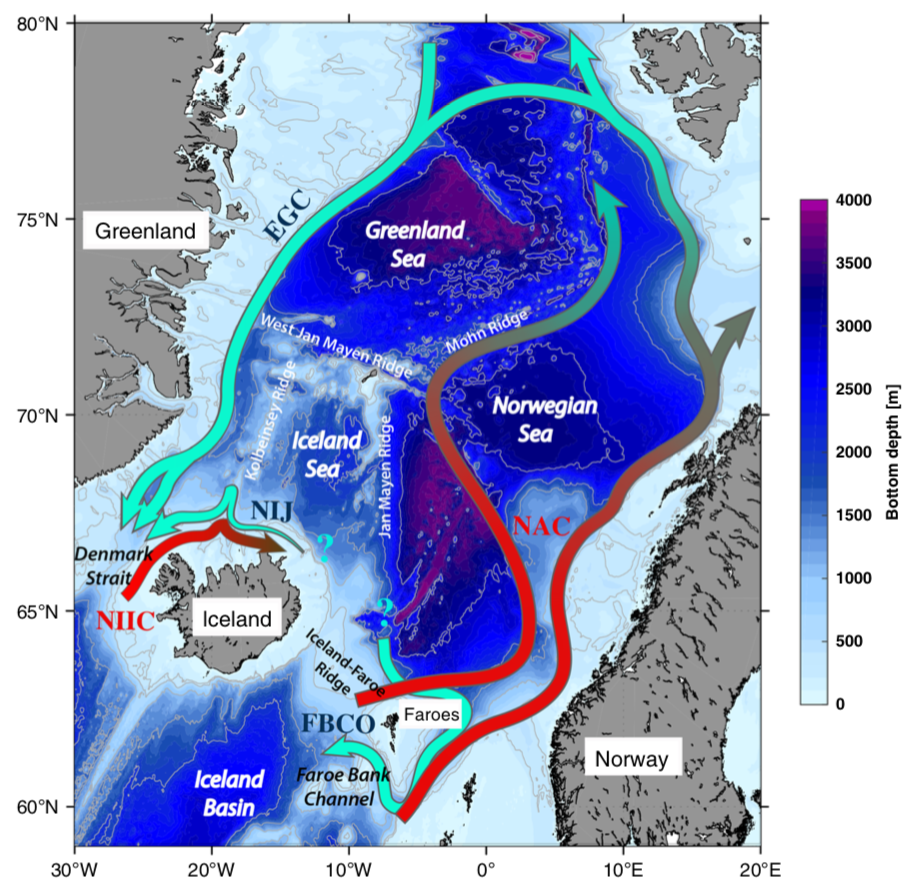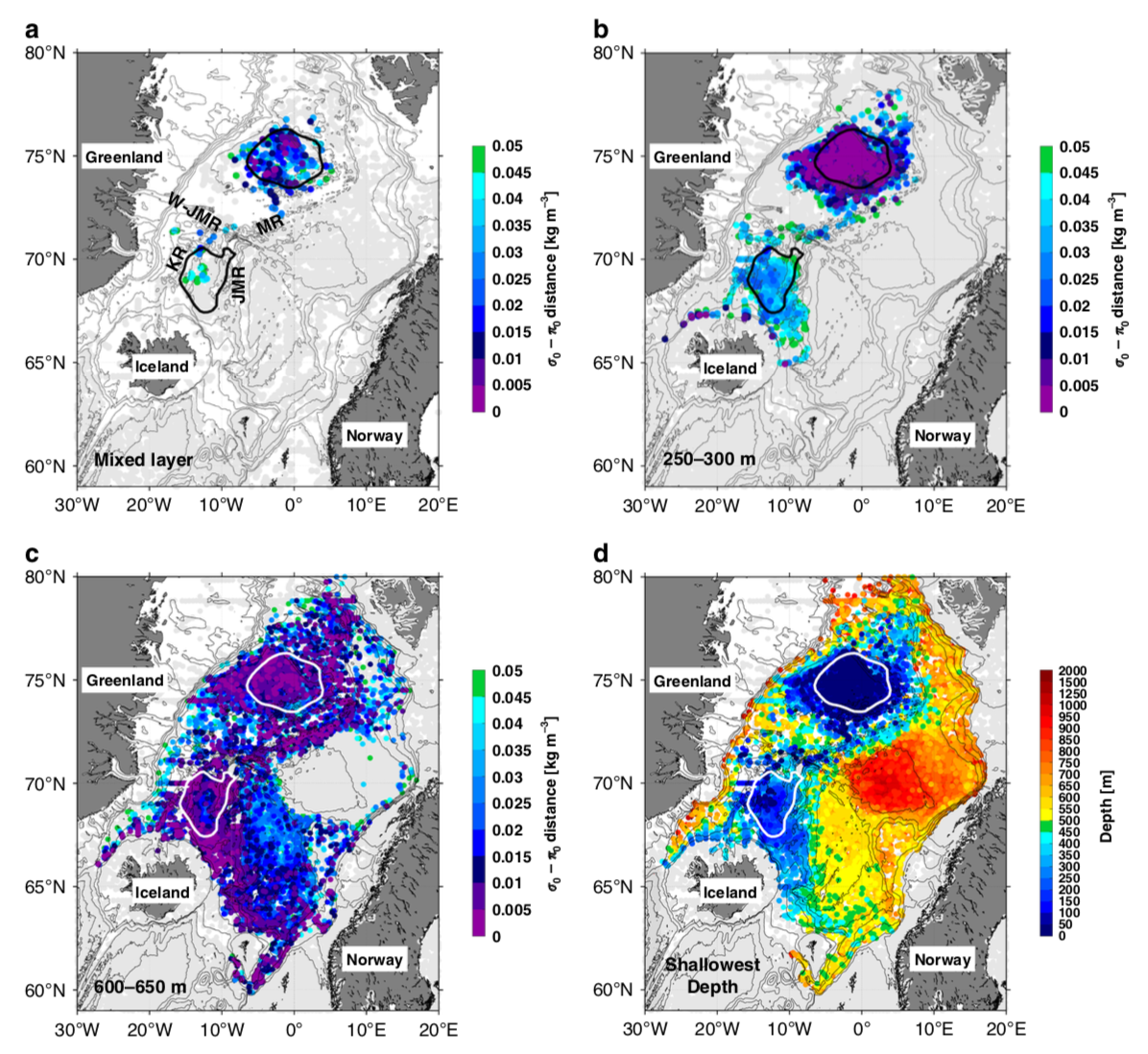Atlantic Meridional Overturning Circulation (AMOC) is an important part of global ocean circulation and has a significant impact on global climate change. The high-density overflow water body of the Nordic Sea is the coldest and densest water body in the lower branch of AMOC. However, where the water body formed and how it flows to Iceland has not been clear. The Fanghua Xu’s research group of the Department of Earth System Science (DESS) of Tsinghua University, together with 4 domestic and foreign units, based on historical hydrological data, satellite remote sensing data, and using the ocean potential density- potential spicity coordinate system, discovered for the first time that high-density overflow water bodies in the Nordic Sea formed in the Greenland Sea vortex area. After the formation of the water body, it sinks, and the topography of the coastal bottom flows southward to northern Iceland. The research results are titled Sources and upstream pathways of the densest overflow water in the Nordic Seas and published in the high-impact scientific journal Nature Communications.

Fig. 1 Schematic circulation of the Nordic Seas. Colors represent bottom terrain and blue arrows represent overflow flows.
The high-density overflow water bodies in the Nordic Sea are mainly formed by the convection and ventilation of the open ocean in winter. However, due to the influence of the winter sea conditions, it is difficult to observe the process on site. The water body sinks after it is formed and flows in the ocean subsurface, making it difficult to study its path. Although the predecessors in northern Iceland have confirmed the path of the overflow water body flowing along the land slope of Iceland to the east and west sides (as shown in Figure 1), the formation area and upstream path of the water body are still unclear. In this study, by calculating the distance between different water bodies (sigma-pi distance) in the ocean potential density- potential spicity coordinate system, we tracked the high-density overflow water bodies on the land slopes of Iceland. From the distribution map of the minimum sigma-pi distance between the water in the mixed layer and the high-density overflow water on the Icelandic land slope in winter (as shown in Figure 2a), it can be found that the high-density overflow water is mainly formed in the Greenland Sea vortex area. After the formation of the water body, the paths that flow along the Mohn ridge and the east and west sides of the Iceland Sea to the north of Iceland are in the distribution map of the minimum sigma-pi distance of the water layer at 250-300 meters and 600-650 meters (as shown in Figure 2b-c) It is reflected and further verified in the absolute geostrophic flow velocity field.

Fig. 2 The distribution of the minimum sigma-pi distance in the mixed layer (a), 250-300 m (b), 600-650 m (c) and the shallowest depth (d) in winter.
This study also pointed out that there is an interdecadal change in the formation of high-density overflow water bodies in the Nordic Sea, that is, the transition from the marginal area of the Greenland Sea vortex (1986-2004) to the vortex central area (2005-2015), but the flow direction after the formation of the water body The downstream path has not changed much. The change of the water body formation area is related to the weakening of the winter convective ventilation process in the Nordic Sea and the weakening of the Greenland Sea vortex under the background of climate change. Understanding the source and path of the formation of high-density water bodies in the Nordic Sea is an important prerequisite for understanding the formation and long-term changes of AMOC deep water. Therefore, this research has important scientific significance in the field of global ocean circulation systems and climate change.
Jie Huang, a doctoral student in DESS at Tsinghua University, is the first and corresponding author of the paper, Fanghua Xu, Associate Professor of DESS, Robert S. Pickart, Senior Scientist at Woods Hole Oceanographic Institution, Professor Ruixin Huang, Peigen Lin, Postdoctoral Fellow, Ailin Brakstad, doctoral student of University of Bergen is the co-author of the thesis. The research was supported by the Natural Science Foundation of China and the United States.
Full text link: https://www.nature.com/articles/s41467-020-19050-y.
Writers: Jie Huang
Reviewers: Wu Haiping
Editor: Wang Jiayin